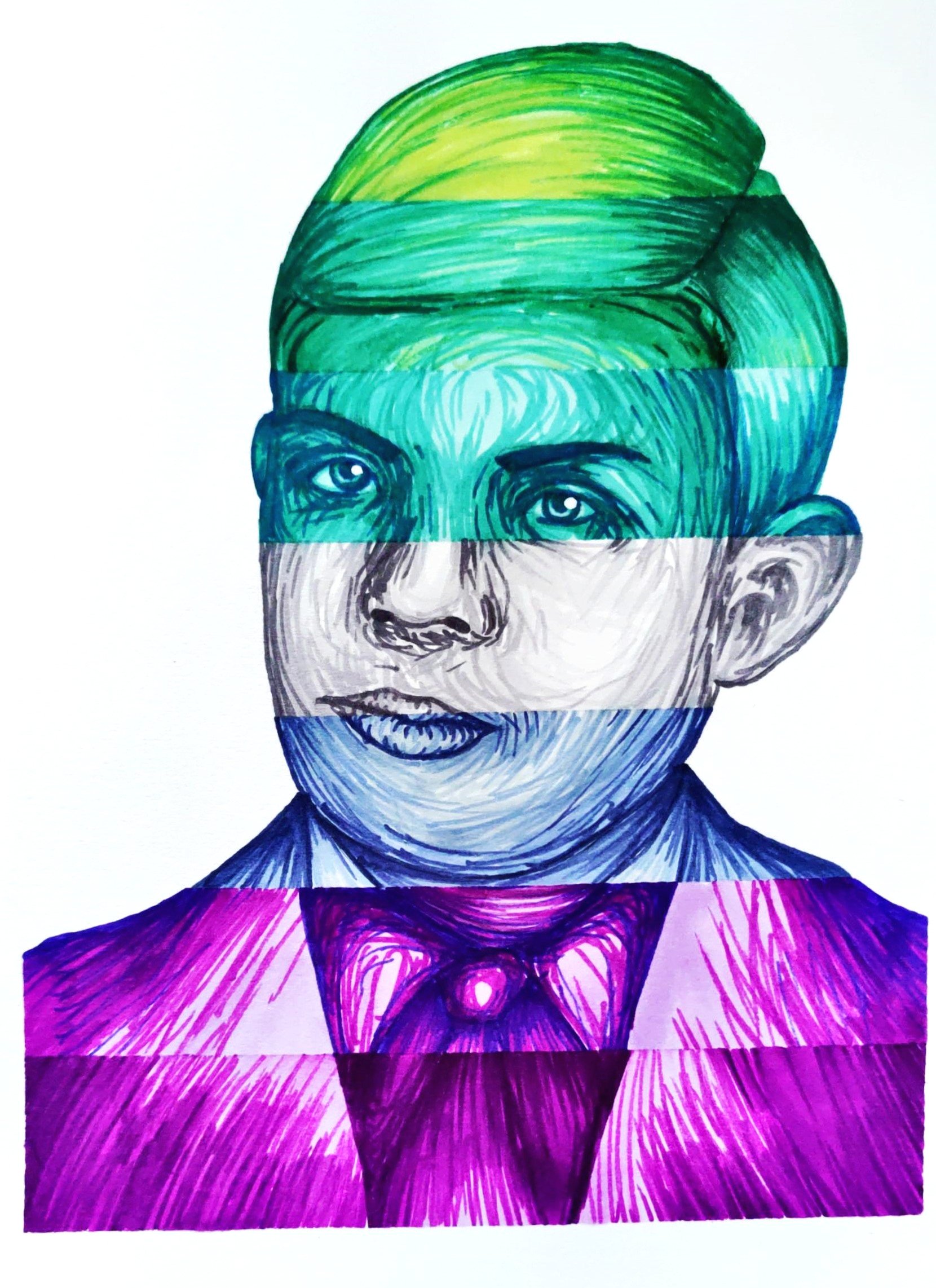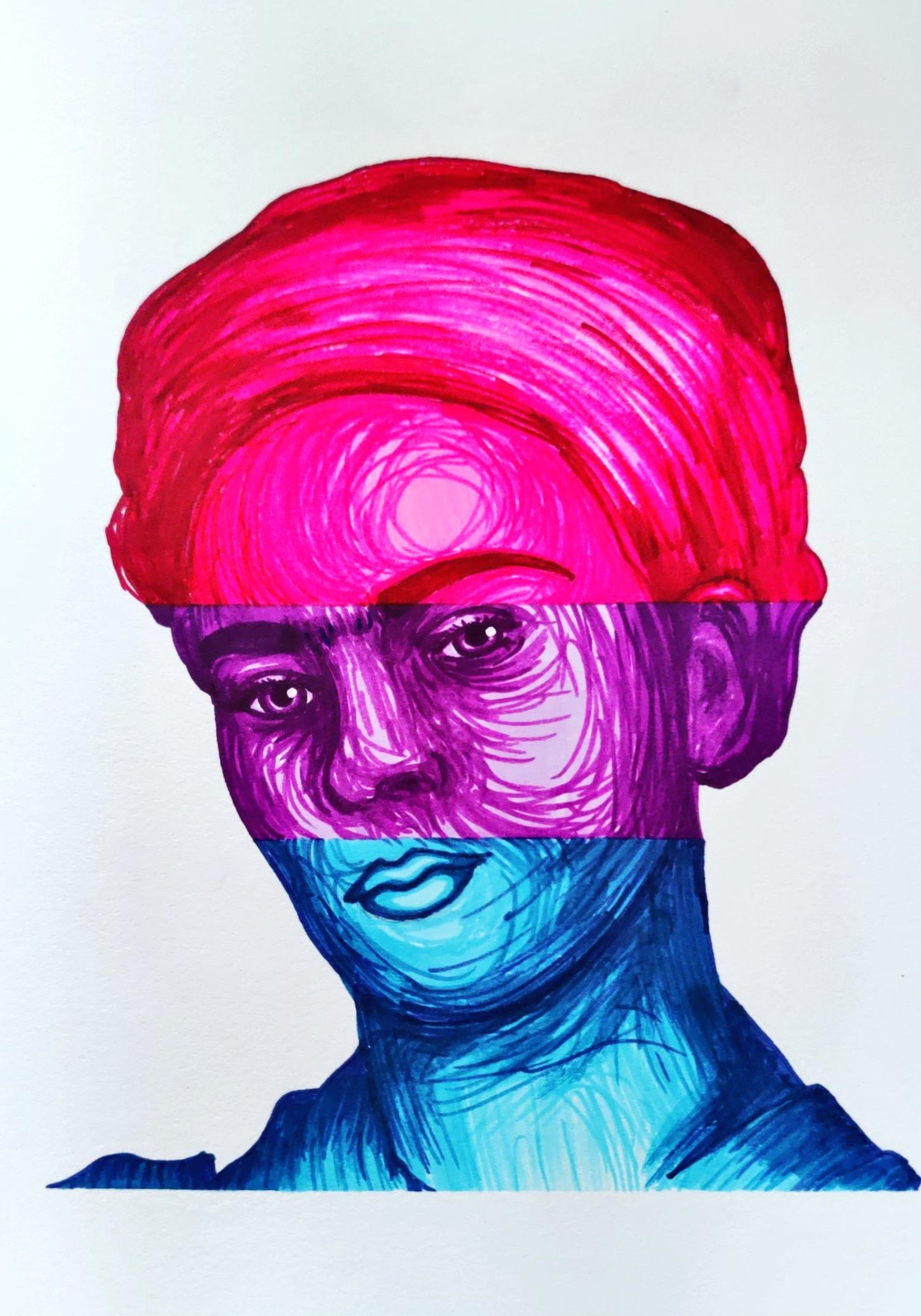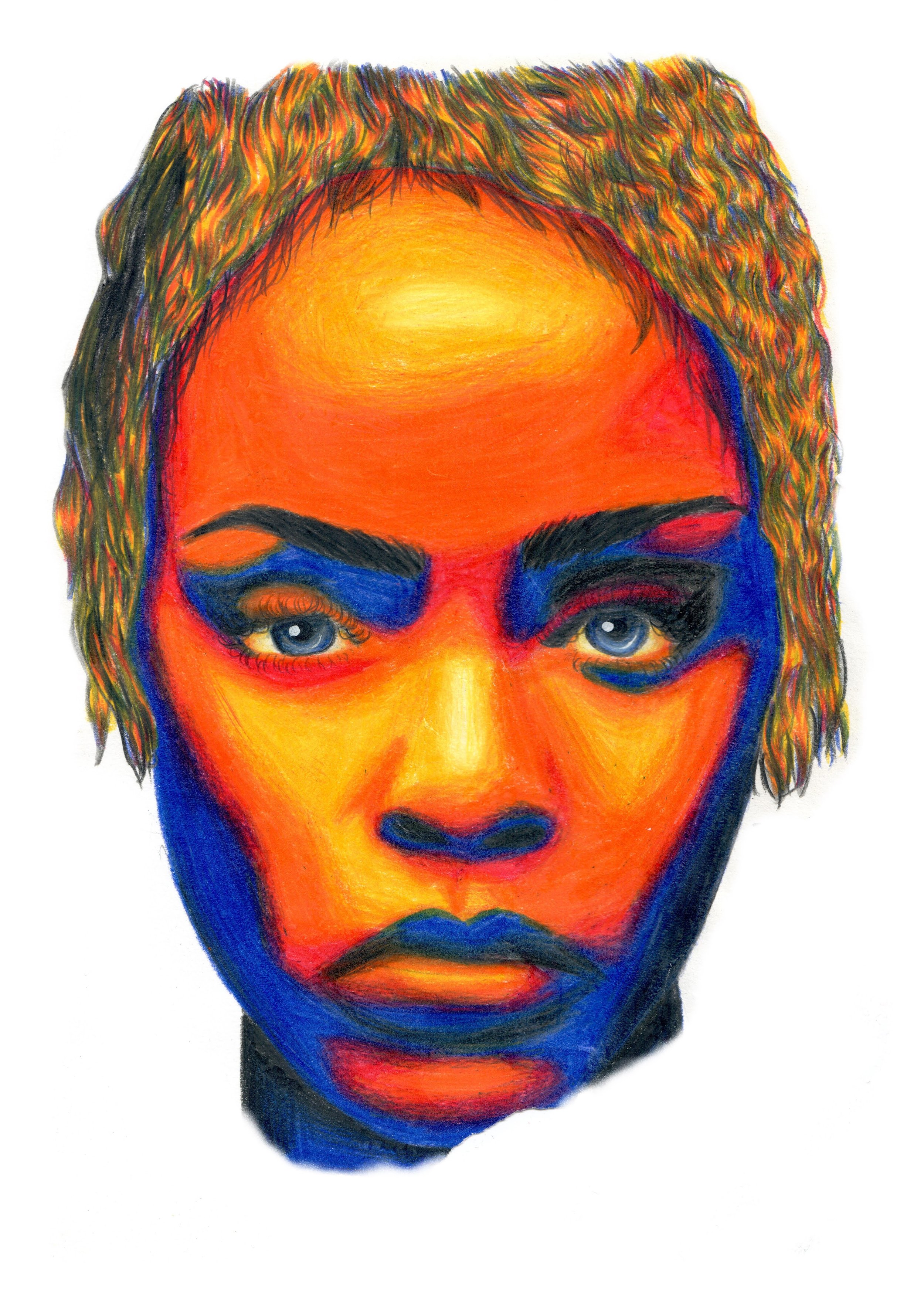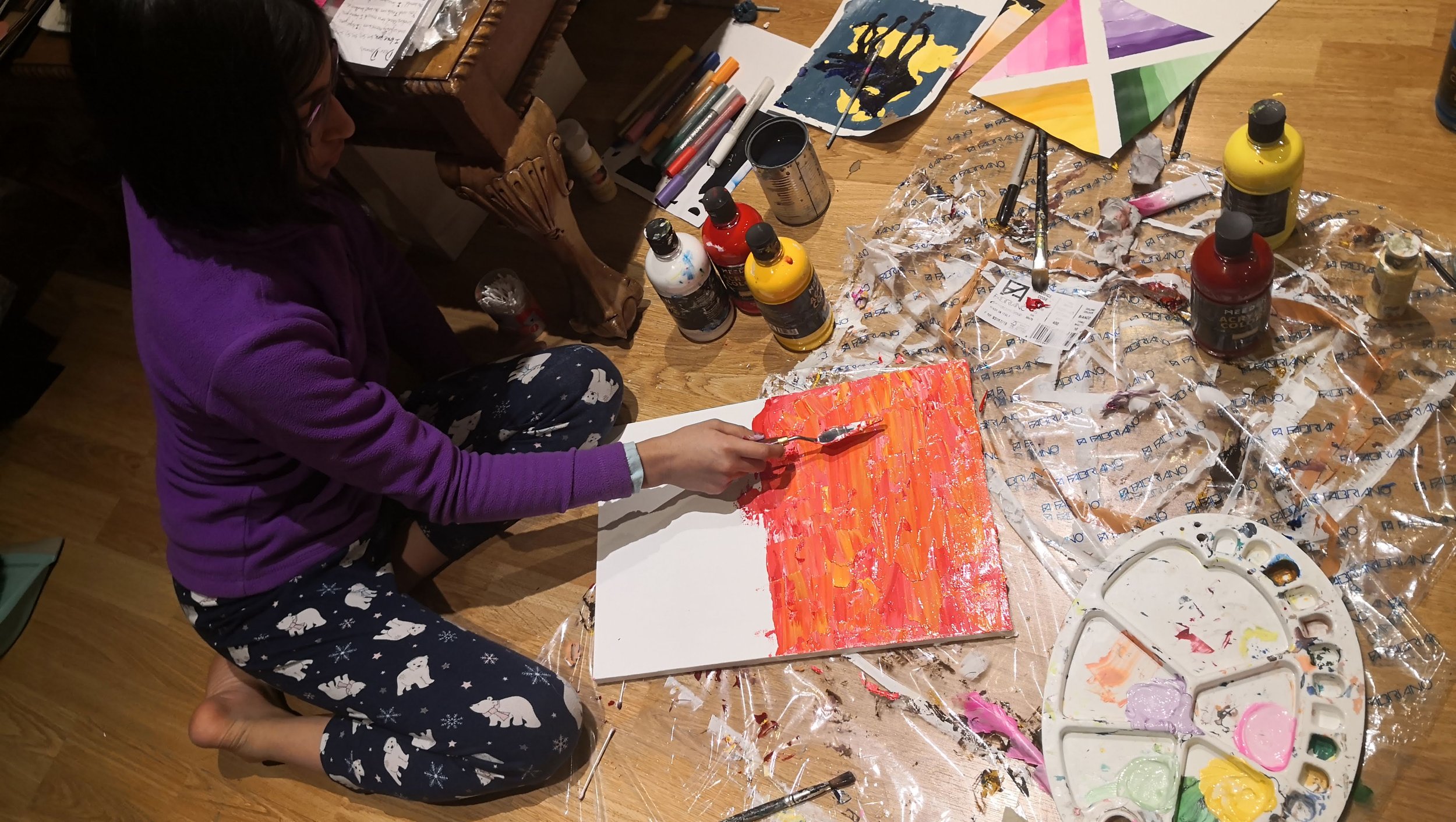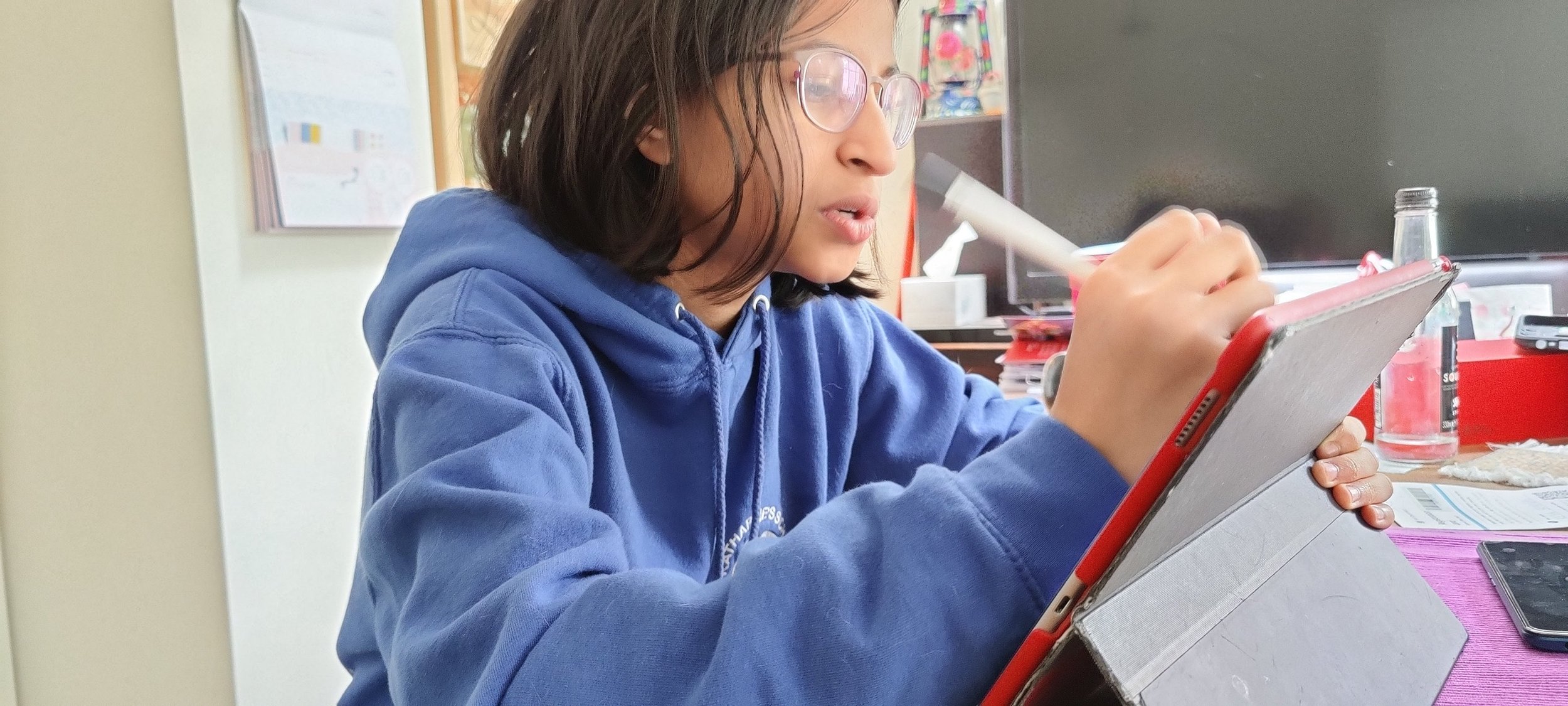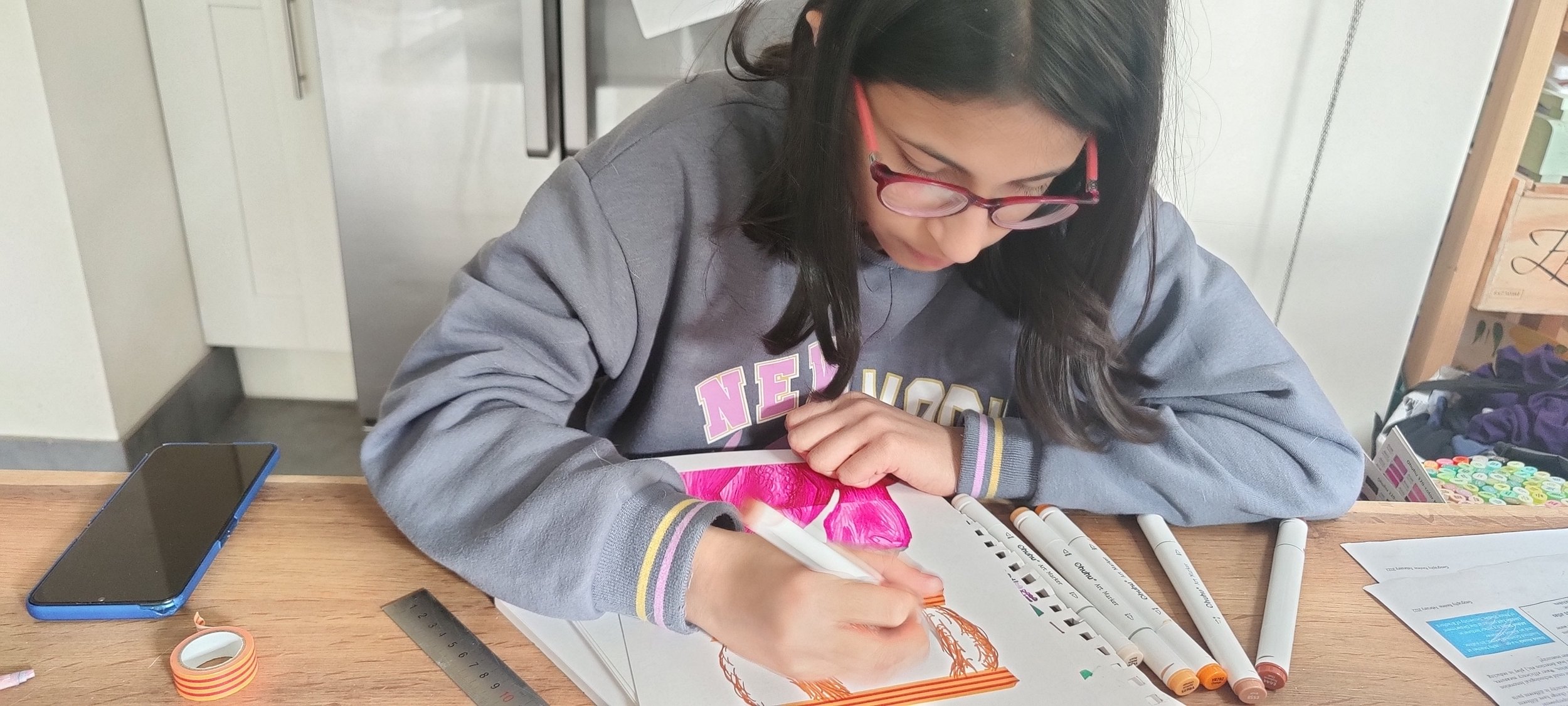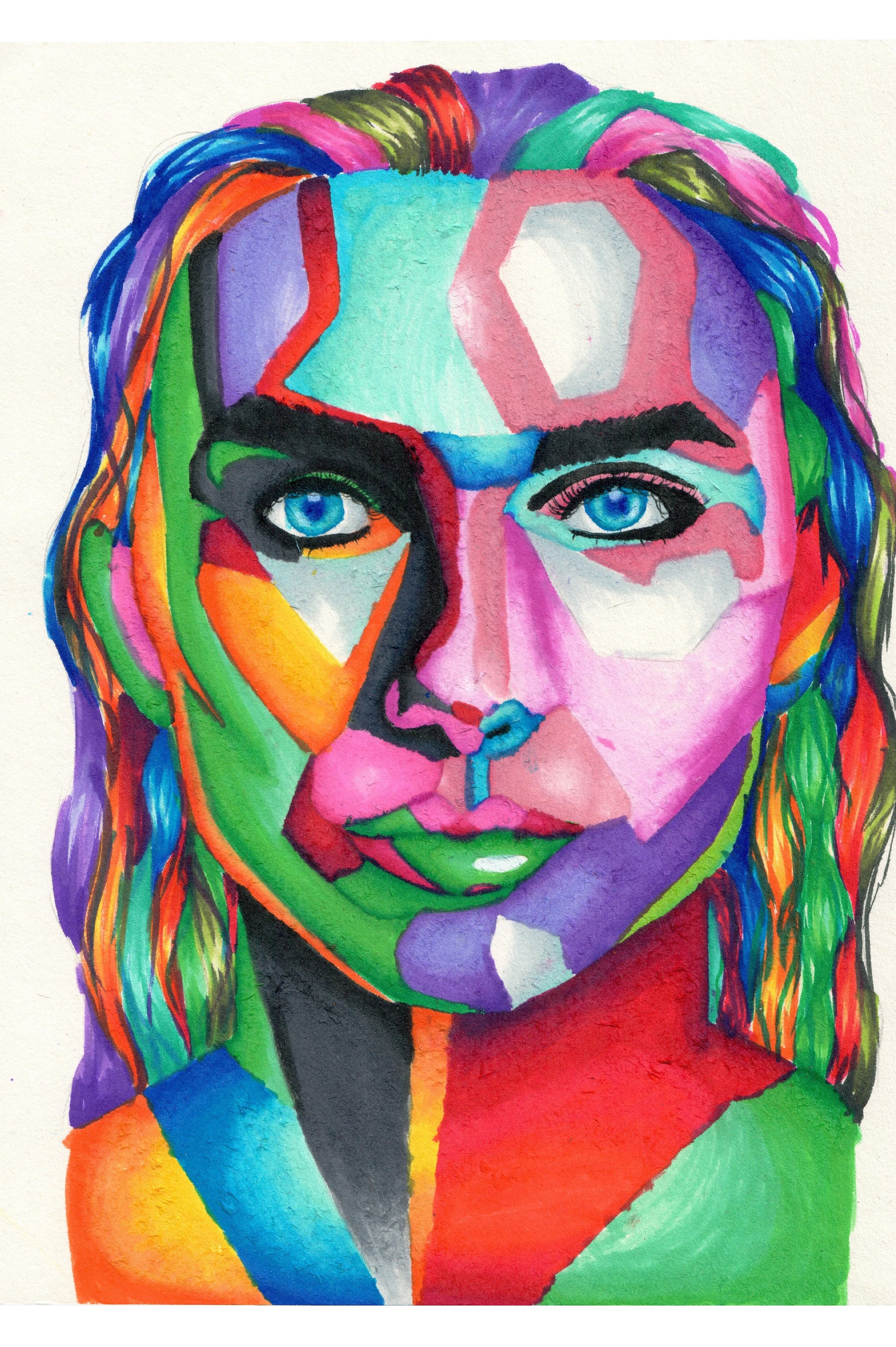Interview
Keya Srinivas
Keya Srinivas is 13 years old, and already a prolific artist. She is self-taught and works with pencils, alcohol markers, mixed media and acrylics.
She spends all her waking hours immersed in her work, to the point where she multi-tasks her meals, music and even FaceTimes her family while making art.
Keya is very fond of animals and has two dogs. She lives with her parents in Kent, England.
What is your background and how did you start your journey in the art world?
“I am a passionate artist and have always been, for as long as I can remember. My parents still have a fridge magnet with my art from back when I was 5. I am now 13 years old, and have worked hard to develop my artistic skills. I started off with comic book characters because they are so multi-layered. I had a period of stencil airbrush works inspired by Banksy. I now love doing portraits in a style that is quite uniquely my own.”
“My work helps me make sense of the world around me, first in understanding more through research, and second, through processing it into an artwork.”
What inspires you?
“I’m inspired by people, especially historic figures who fought for human rights, gender equality and diversity. I don’t go for the obvious big names because they have already got a gallery of admirers. The unsung heroes are those who have done just as much, but don’t get the recognition they deserve. Lots of these people have been forgotten in history because of their gender, sexuality, age, disability or social class. These forgotten ones set the wheels in motion for bigger leaders to follow. They are figures in history that deserve more recognition.”
“Claudette Colvin, a 15 year old who was arrested in 1955 for refusing to give up her seat on the bus, before Rosa Parks took a similar stand.”
What themes do you pursue? Is there an underlying message in your work?
“I started working on portraits some years ago, to come to grips with the very real issues of racial injustice. I used different colors on faces to explore the meaning of being a colored person. Now, I have found an obsession with inspiring figures of the past.
The underlying message in my work is that not all great deeds are done by famous people. Ordinary people who feel ordinary and live ordinary lives do extraordinary things that subtly shift the direction of the human story.”
“Rosalind Franklin researched and discovered the structure of DNA, only for the credit to be taken by Watson and Crick. When Watson and Crick requested that Rosalind Franklin be included in the Nobel Award citation, the Nobel committee refused to award the prize posthumously.”
How would you describe your work?
“I’d describe my work as satisfying. It is a hugely personal journey. I am exacting in my demands of myself as an artist. I know when something is not quite right, and find myself unable to compromise. I spend a large amount of time planning with colors and media. I also do deep research to help me find the subjects that fit my theme at any given moment. In looking for the obscure, I end up learning a lot about the obvious.
I am growing up in a world that is defined by crises and conflicts. Some of these conflicts feel very real to me, specifically gender, race and diversity.”
Which artists influence you most?
“I am fortunate to grow up in a home surrounded by art. I am spoiled for choice for inspiration. We have works by greats like David Hockney, Andy Warhol and Roy Lichtenstein on the one hand, and signed prints from Comic Cons on the other. All of these artists have pushed me to explore pop art, which comes through in the portrait series that I am currently working on.
Most of my inspiration is from other young artists on social media. They are the unnamed and the unrecognized.”
What is your creative process like?
“I don’t typically set out to do projects. I get intrigued by a topical subject in the news or in my schoolwork. I am an obsessive researcher and this leads me down many rabbit holes, some of which result in artistic inspiration. The desire to rectify past wrongs and the need to sing in praise of the unsung lead me to my choice of subjects. I sift through piles of images of subjects, select the ones that are just right, and then render them in my own unique artistic style.”
What is an artist’s role in society and how do you see that evolving?
“An artist is a selfish person. You have to scratch the creative itch. I’m not attempting to change the world through my art. If I am honest to my art, it will create the right awareness around issues and causes that I care about. This is the way of the artist. To be sidetracked into using art as a tool for activism is good, but only when artists truly believe in the artistic process that led them there. There are many ways that our society is hurting right now, and it is impossible to feel equally passionate about all of them. We have to react as individuals first, and channel those reactions into art.”
Have you had any noteworthy exhibitions you'd like to share?
“I am just 13 years old. I would love to create art for art's sake. I did set up my first exhibition and shop at my village Christmas Fair last year. It was the first time I got feedback from people outside my immediate circle on the quality of my work. I have been greatly encouraged.
I have a generous mentor in the famous London artist C A Halpin, and I will be immersing myself in the Art Car Boot Fair 2022, at her stall there.”
Website: www.montclarecollection.com
Instagram: @montclarecollection


